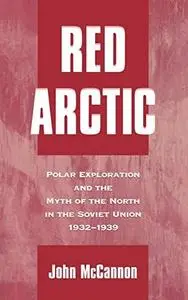Red Arctic: Polar Exploration and the Myth of the North in the Soviet Union, 1932-1939 By John McCannon
1998 | 255 Pages | ISBN: 0195114361 | PDF | 17 MB
1998 | 255 Pages | ISBN: 0195114361 | PDF | 17 MB
Since I'm the author of this book, please disregard the five-star review, which I've assigned pro forma. This is meant to be a note about Ted Heckathorn's customer review of _Red Arctic_.Mr. Heckathorn criticizes my book mainly on the grounds that I fail to take into account Robert Harrison's "proof" that the USSR's three transpolar flights of 1937 (along with other Soviet air expeditions) were faked. I would argue in return that to ignore Harrison's "findings" is not a fault, but rather responsible scholarship.Readers should be aware that Harrison's book (a vanity publication that was, for some time, unable to find a press at all, then was taken up by a publisher that specializes mostly in thriller fiction) is a classic example of conspiracy-theory fringe literature. At least on the Internet, its principal endorsement comes from a British neo-fascist group (www.heretical.co.uk), most of whose web space is taken up with paranoid ravings about "Hebrew millionaires" and "Jewish communists." This is not to say that Harrison (or Heckathorn) shares any of these views; it is simply to show that Harrison's writings hardly occupy a place in the scholarly mainstream.Harrison's arguments are based on speculative readings of grainy, poor-quality Soviet photos, equally grainy, poor-quality photos taken by the U.S. Army, and theories and assessments contained in U.S. intelligence reports. Harrison fails to take into account that the Soviet media (much like Western news services, then and today) routinely printed stock photos of pilots and aircraft, so images in newspapers and books did not always match the times and places mentioned in captions or headlines. This creates inconsistences, out of which Harrison spins theories more elaborate than they need to be. Moreover, the U.S. Army was hardly the most objective observer of Soviet aviation, and, for that matter, it was not always the most accurate. Also, writing in the 1980s, Harrison had no access to government and Communist Party documents in Russian archives, a plethora of which shows that these flights did in fact take place (and since these documents were never intended for public consumption, Soviet or foreign, it is safe to assume that they were not faked).Finally, Harrison's conclusions, especially when applied to the third polar flight of 1937--Levanevsky's fatal disappearance--flies in the face of all logic. If the Stalinist regime went to such great lengths to deceive the world about its polar triumphs, in order to impress the international community with its technological prowess and human bravery, why on earth would it follow two stunning successes with a hideously embarrassing failure? If Stalin had wanted to purge Levanevsky (as Harrison and Heckathorn assert), he could have done so easily without a needlessly intricate plan that necessitated tarnishing the USSR's earlier exploits in the Arctic (faked _or_ genuine).Admittedly, no archival record ever reflects the past with absolute precision or completeness. And Stalin was certainly ethically and practically capable of any deception imaginable. But Stalin did not deceive without rational purpose. And the archival record is more trustworthy than dubious guesswork based on possible inconsistencies spotted in photographs of less than stellar quality. At most, Harrison has raised the rather truistic point that not everything about Soviet propaganda exploits was as it seemed. But, with respect to matters of substance, he has neither proven nor disproven anything, circumstantially or conclusively.



